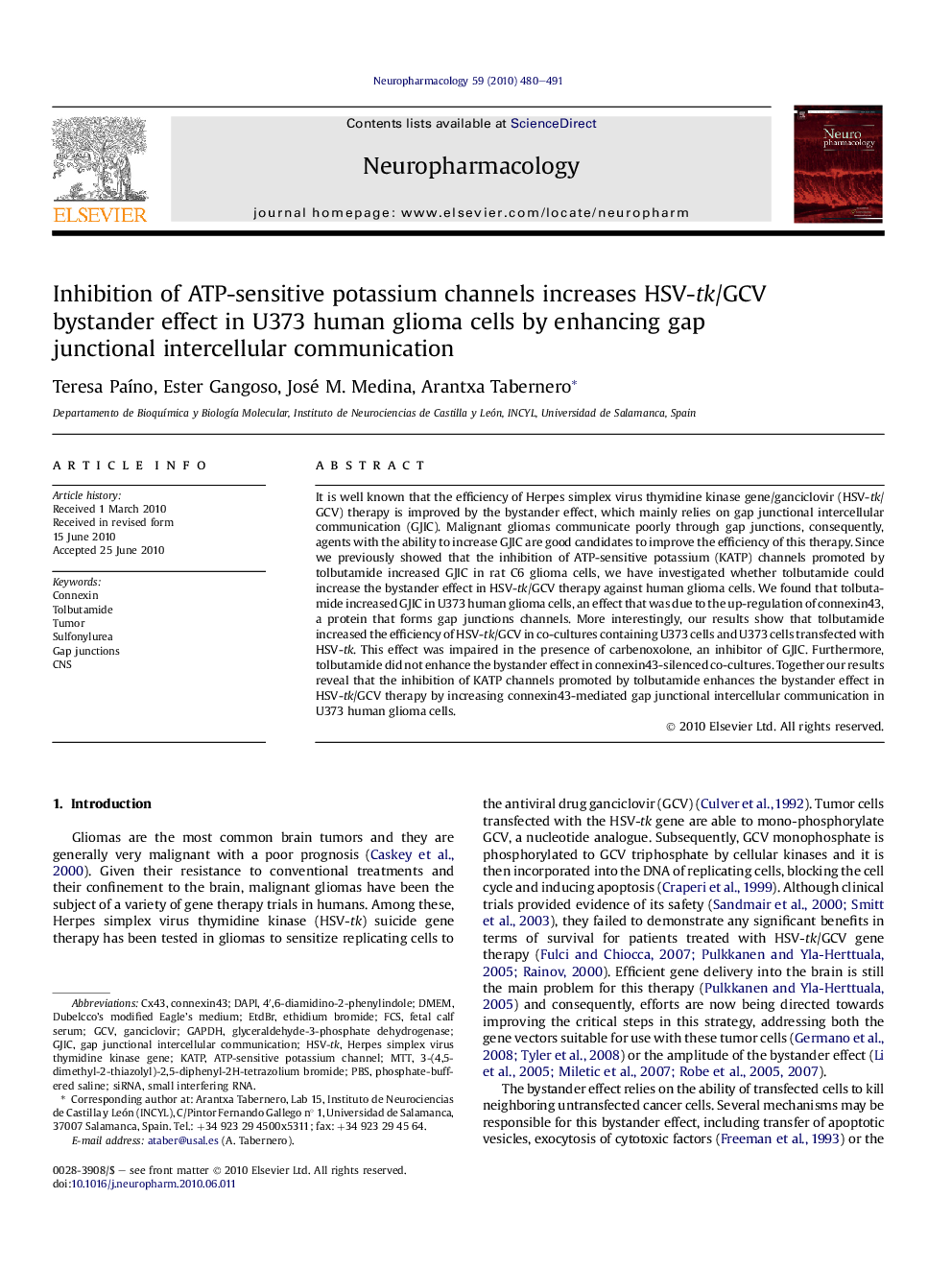| Article ID | Journal | Published Year | Pages | File Type |
|---|---|---|---|---|
| 2493955 | Neuropharmacology | 2010 | 12 Pages |
It is well known that the efficiency of Herpes simplex virus thymidine kinase gene/ganciclovir (HSV-tk/GCV) therapy is improved by the bystander effect, which mainly relies on gap junctional intercellular communication (GJIC). Malignant gliomas communicate poorly through gap junctions, consequently, agents with the ability to increase GJIC are good candidates to improve the efficiency of this therapy. Since we previously showed that the inhibition of ATP-sensitive potassium (KATP) channels promoted by tolbutamide increased GJIC in rat C6 glioma cells, we have investigated whether tolbutamide could increase the bystander effect in HSV-tk/GCV therapy against human glioma cells. We found that tolbutamide increased GJIC in U373 human glioma cells, an effect that was due to the up-regulation of connexin43, a protein that forms gap junctions channels. More interestingly, our results show that tolbutamide increased the efficiency of HSV-tk/GCV in co-cultures containing U373 cells and U373 cells transfected with HSV-tk. This effect was impaired in the presence of carbenoxolone, an inhibitor of GJIC. Furthermore, tolbutamide did not enhance the bystander effect in connexin43-silenced co-cultures. Together our results reveal that the inhibition of KATP channels promoted by tolbutamide enhances the bystander effect in HSV-tk/GCV therapy by increasing connexin43-mediated gap junctional intercellular communication in U373 human glioma cells.
